

Matt Campbell
2026 Hyundai Tucson Hybrid review
24 Hours Ago
Chery's entrant into the critical mid-size SUV class majors on value and cabin presentation, but driving manners and safety tech need polish.
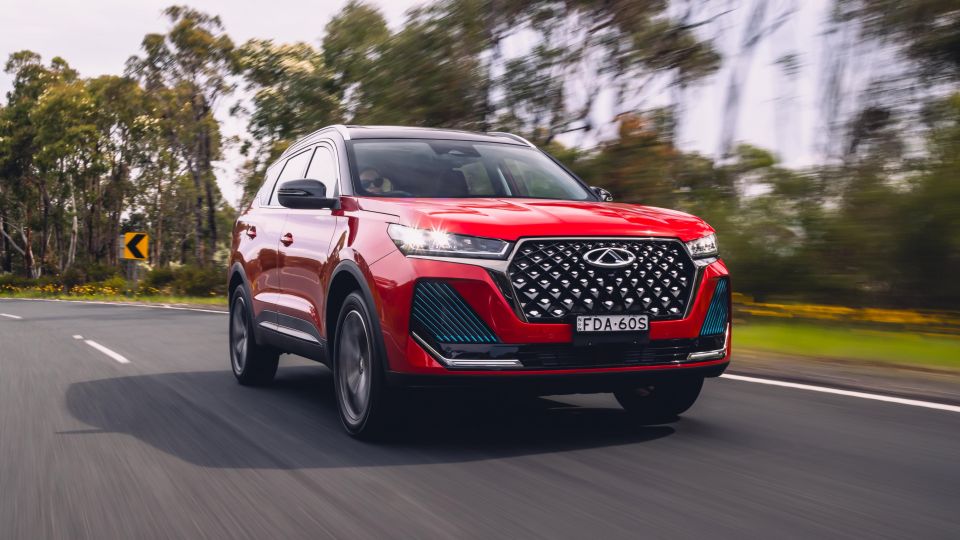
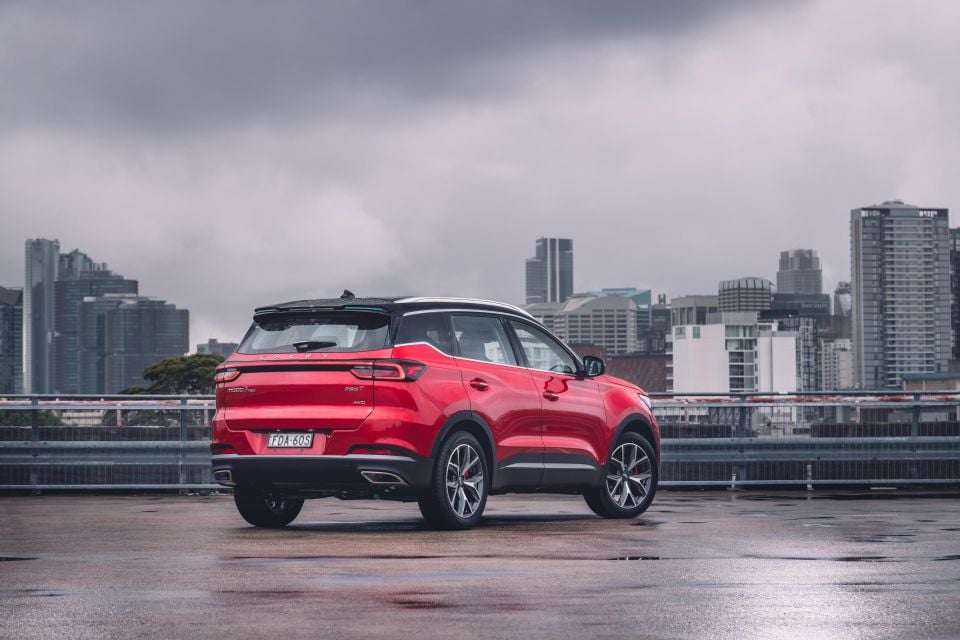

Marketplace Editor

Marketplace Editor


Marketplace Editor

Marketplace Editor
Where expert car reviews meet expert car buying – CarExpert gives you trusted advice, personalised service and real savings on your next new car.
Chery has returned to the Australian market with a bang. With just one model on sale the Chinese brand is already doing more volume than the likes of Jeep and Peugeot – established brands with lengthy history Down Under.

The company is looking to build on that further by entering what is perhaps Australia’s biggest and most competitive new vehicle segment – the mainstream medium SUV class – with the 2024 Chery Tiggo 7 Pro.
Fun fact: The Australian-market Tiggo 7 Pro appears to be a version of the vehicle known as the Tiggo 7 Pro Max in overseas markets like South Africa, with a more premium cabin and more upmarket features, as well as the more powerful 1.6-litre turbo petrol engine over the lesser version’s 1.5T powertrain.
With sharp pricing, a lengthy standard equipment list, and a solid ownership program on paper, the Tiggo 7 is here to take on everything from the Kia Sportage and Mazda CX-5 to the Nissan Qashqai and Honda ZR-V. It straddles the small and medium SUV segments dimensionally somewhat, and is priced in the thick of some hot competition.
Let’s not forget Chery’s fellow Chinese rivals, either. The GWM Haval H6 and MG HS are also vying for a similar audience, though Chery’s team argue it’s the most premium feeling of the Chinese brands – if that’s what you’re after.
Australia is a key market for Chery, with our region a testing bed and something of a launch pad for the Tiggo 7 Pro beyond the borders of the Chinese domestic market, with extensive local validation work done to better hone some of the Tiggo 7 Pro’s assistance systems to Australian tastes.
Has it paid off? Well, I won’t give it all away so early on, but I will say that Chery has put in a solid, if not standout showing.
Prices start from $39,990 drive-away for the entry-level Tiggo 7 Pro Urban, climbing to $45,990 D/A for the Ultimate.
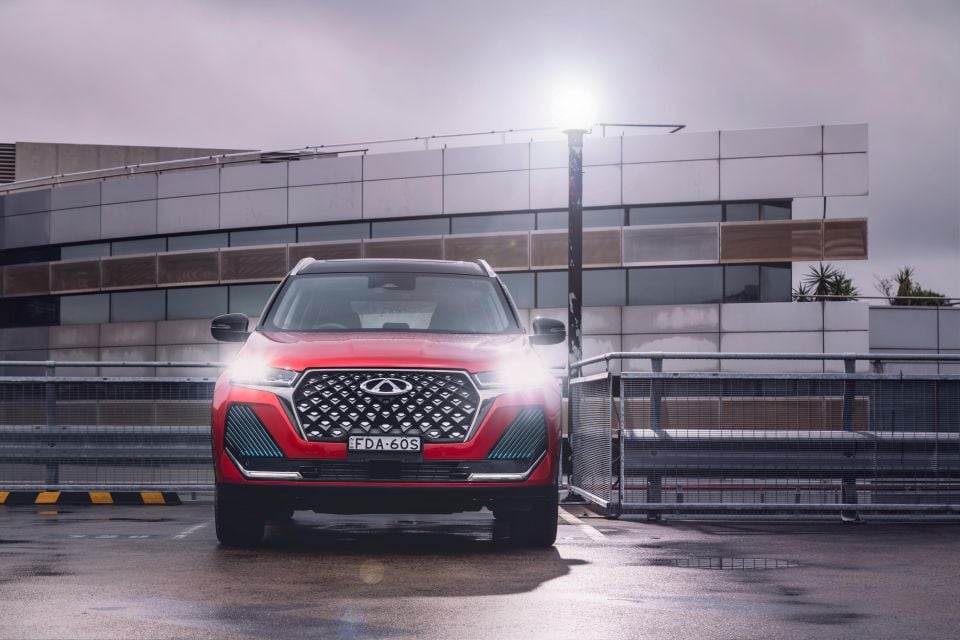
That aligns the Urban with something like a base Mazda CX-5 ($39,990 D/A based on VIC postcode) despite even the entry-level Tiggo 7 Pro featuring the sort of equipment you expect on high-spec models approaching $60,000.
It starts a bit higher than its Chinese-badged rivals, however. The GWM Haval H6 officially starts from $33,990 D/A (though it’s being advertised with thousands off), while the MG HS can be had from as low as $32,990 D/A. That said, you need to spend up to one of the higher variants to match the Tiggo 7 Pro’s spec levels.
Chery also called out established Korean alternatives as key rivals. The Hyundai Tucson can be had from just over $39,000 D/A based on a Melbourne postcode, and same goes for the most affordable Kia Sportage with an automatic transmission – though both of these are much more basic in specification and feature naturally aspirated petrol engines.
Chery Tiggo 7 Pro pricing:
Prices are drive-away
Buy your new car without the stress. It's fast, simple and completely free.

Great service from Travis and team, second time I have used this business would not hesitate to recommend them to anyone
Craig C.
Purchased a Ford Ranger in Sunshine Coast, QLD
CarExpert helped Craig save thousands on his Ford Ranger, now let us save you on your next new car.
Find a dealOne area where I feel Chery has absolutely beaten out GWM and MG is in the cabin, where its presentation apes far more expensive metal.

The Tiggo 7 Pro’s cabin design could have been lifted out of something like a Mercedes-Benz GLE, though then scaled down in size and with, let’s say, more cost-effective elements subbed in to achieve the price point.
The upper sections of the dashboard and doors also receive a stitched-effect leather-like trim that again looks very much like the grained leatherette trimmings offered by luxury brands, though it’s not quite as nice – acceptable given the money, all told.
It definitely has ‘wow’ factor. The dual 12.3-inch displays are nicely integrated and well featured, with inbuilt satellite navigation, an intelligent ‘Hey Chery’ voice assistant, as well as wireless Apple CarPlay and Android Auto all standard.
The displays themselves are good resolution but the processing power isn’t quite a match. Occasionally you’d find it lags while loading programs and the refresh rate on the instrument cluster animations weren’t always as quick as you’ll find in some rivals.
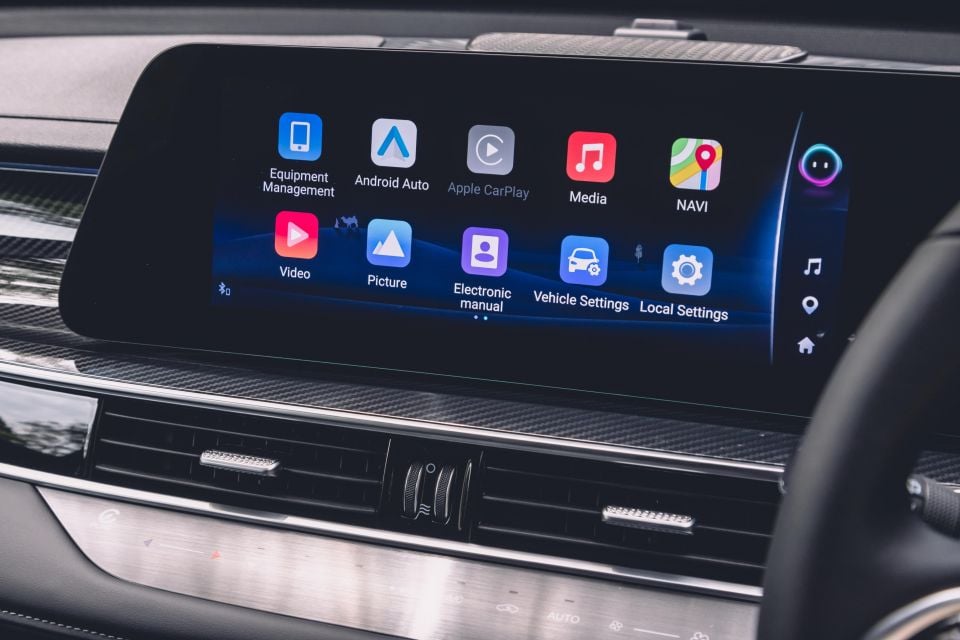

Further, the inbuilt navigation app has a loading screen labelled “turbodog” as we found out during the launch drive, perhaps a fun name bestowed by software engineers. It’s little things like this these that with an added layer of polish could make Chery very competitive with some of the best.
That said, the various views and menus for the digital cluster are pretty cool, including a full map view with minimised dials, a live driver assist feed that could have come out of a Tesla or BMW, as well as multiple layouts that can be as conventional or as new-age as you like. Bravo.
Wireless Apple CarPlay worked well once we connected, though our limited time with the car means we couldn’t gauge more long-term usability and reliability. Same goes for the intelligent (but not net-connected) voice assistant, activated by pressing the little cartoon circle with eyes or saying “Hey Chery”.
I tried a couple of prompts like “open the sunroof” and “I’m cold” which was met with an open sunroof and increased climate control temperature respectively, though saying “Hey Chery” didn’t always work.

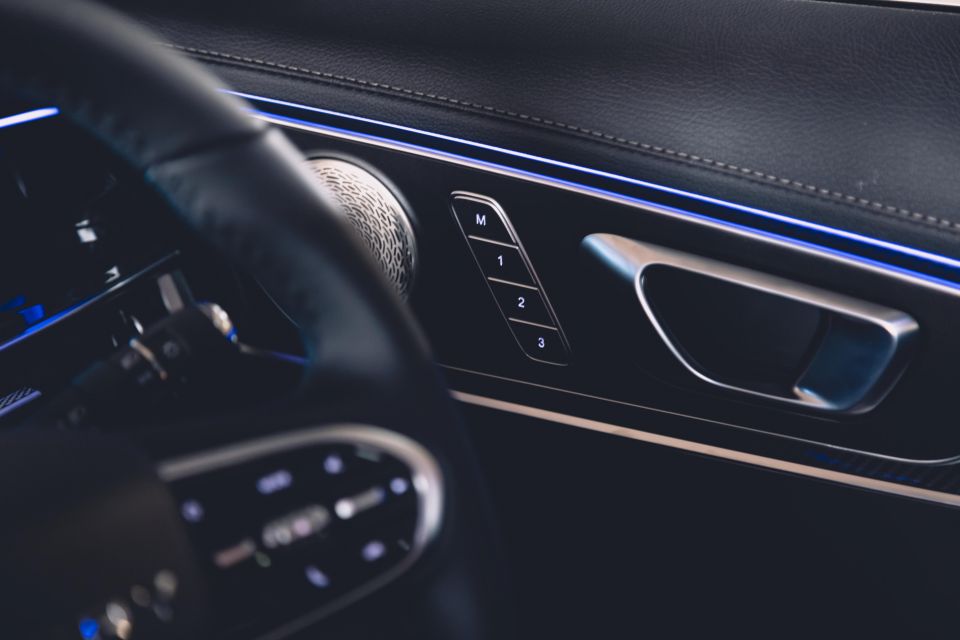

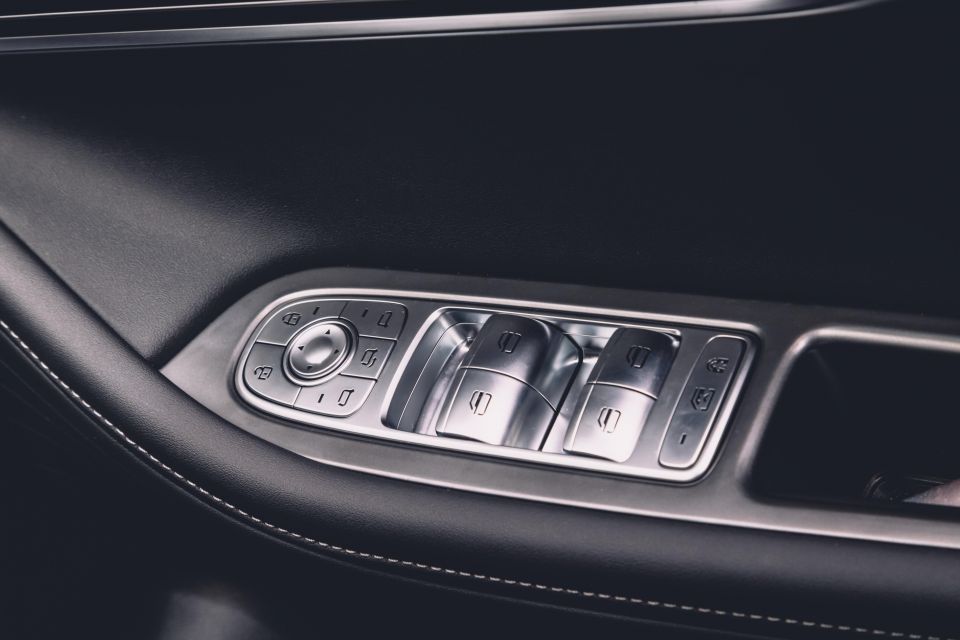
Poke and prod around more and you can really feel the Mercedes-Benz influence, right down to the window switches and starter button that look almost identical to the Benz units. Even the speaker grilles look like the Burmester covers used in various Mercedes models, though without the Burmester script and not quite as metal-like in feel.
There’s a confusing mix of trim ornamentation as well, ranging from glossy faux carbon-fibre on the dashboard, to a brushed-effect plastic on the centre console that is trying to look like aluminium, as well as textured black plastic on the doors. Not quite to my personal tastes, but it’s interesting.
Overall build quality feels pretty solid, though we did notice some small squeaks in the cabin in both the Urban and Ultimate test cars driven on the launch when negotiating offset surfaces like driveways or big pothole gaps on the sides of country roads.
The switchgear all has a clicky feel to it like some luxury brands, and I really love the look and feel of the steering wheel. It a very clean and upmarket design with a quality feel to the rim and user-friendly switchgear – though the toggle-looking controls don’t move up and down like you might initially expect.

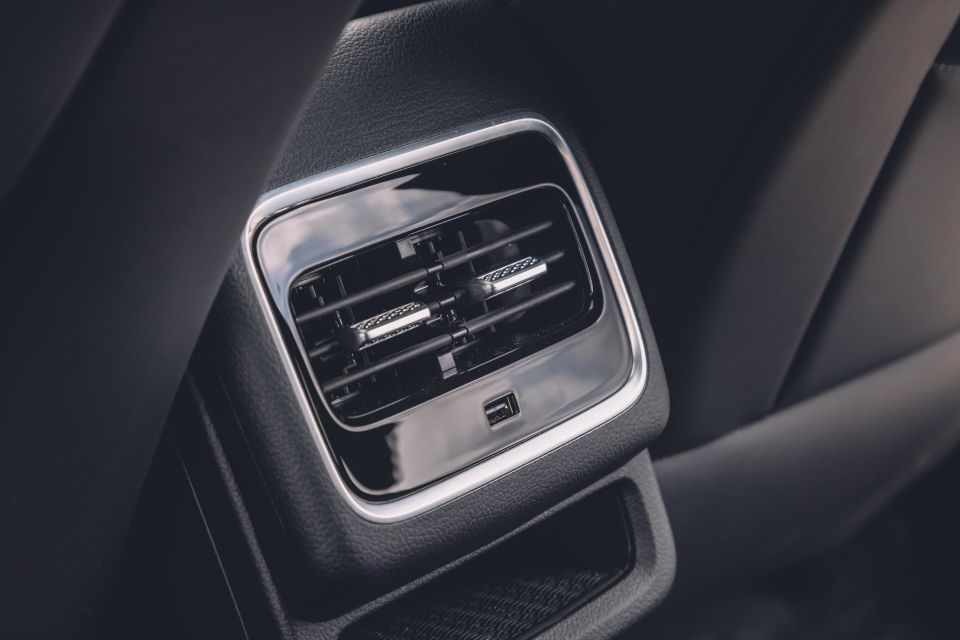
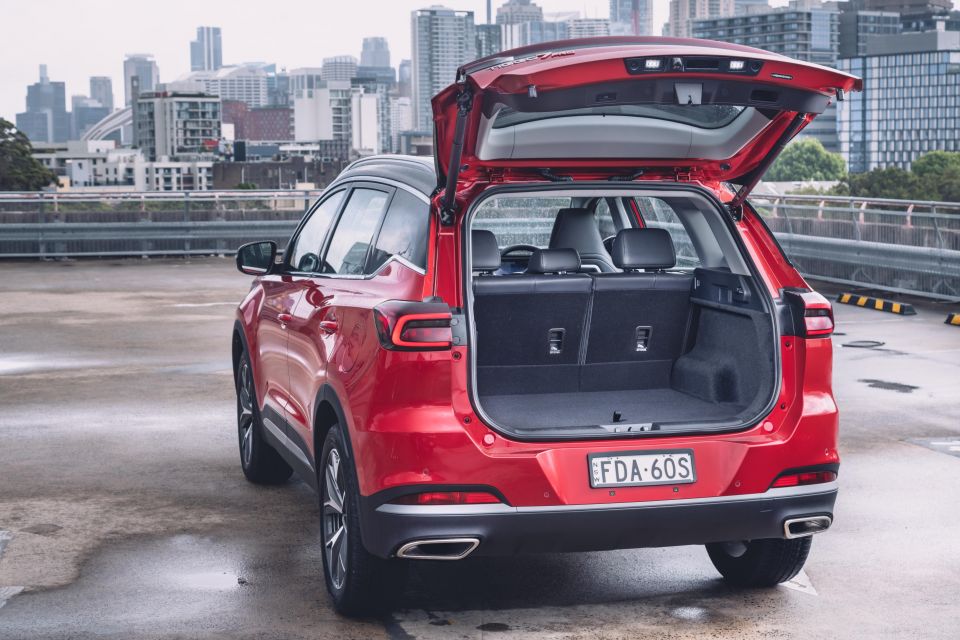
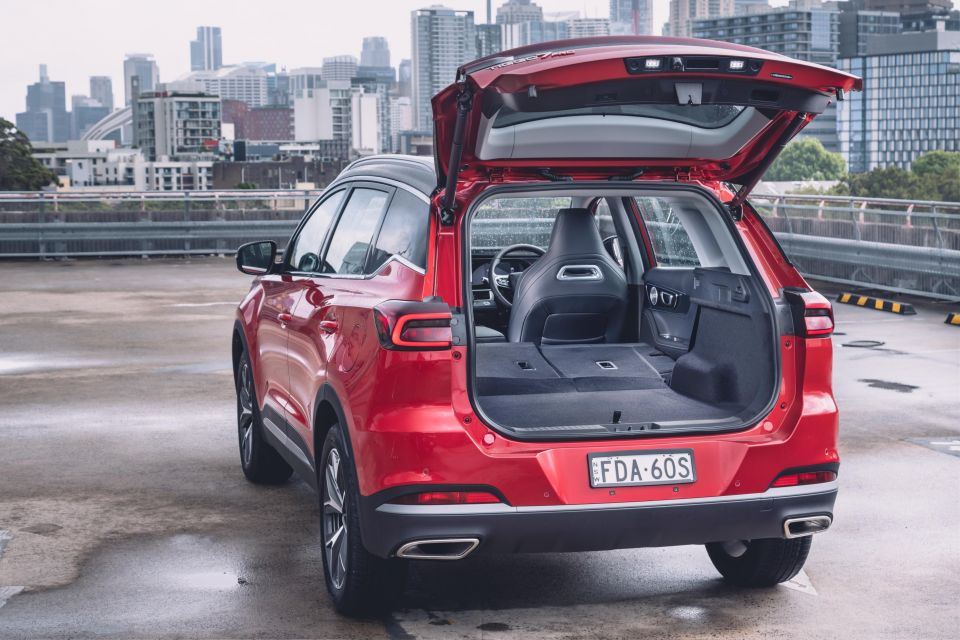
Chery quotes 626L ‘minimum’ for the luggage capacity, expanding to a maximum of 1672L. It’s not clear which measuring standard is used for these figures, though to my eye it appears the volume is measured to the roof.
It also features a full-size spare wheel under the boot floor across the range, something of an abnormality these days.
At launch, the Tiggo 7 Pro will be available with a single powertrain option – a 1.6-litre turbocharged four-cylinder petrol engine.
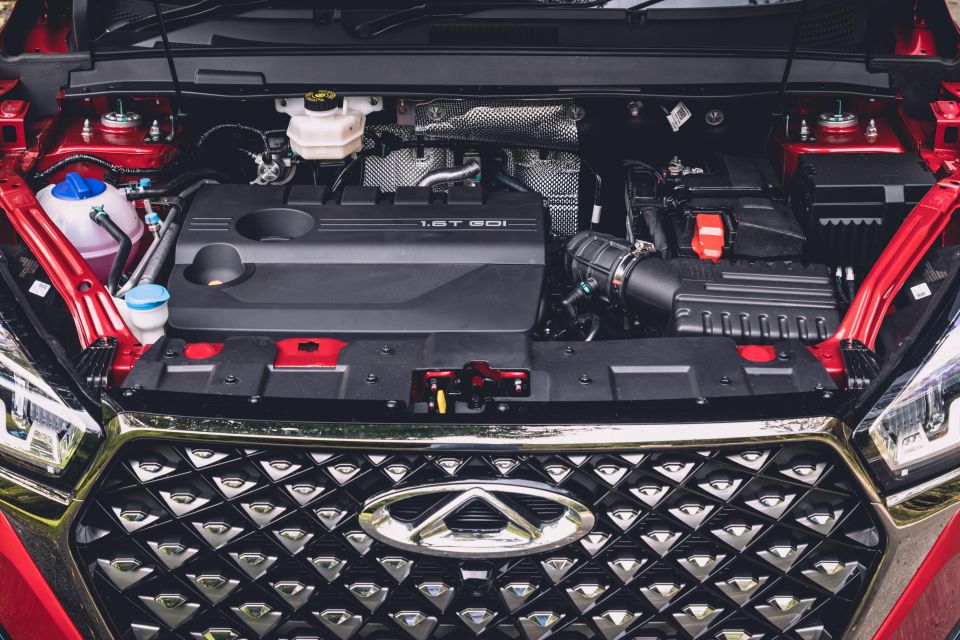
Developing 137kW (5500rpm) and 275Nm (2000-4000rpm), the engine is teamed with a seven-speed dual-clutch automatic transmission which drives the front wheels in Urban and Elite versions, or all four wheels in the top-spec Ultimate.
Chery claims a 9.5-second 0-100km/h time for FWD models, and a slower 9.9 seconds for the AWD flagship. Quoted fuel consumption is 7.0L/100km for the Tiggo 7 Pro FWD, and 7.8L/100km for the AWD – both figures are on the combined ADR cycle. We saw closer to 8.5-9.0L/100km on our launch drive, which is fine but not amazing.
The fuel tank measures 51L in FWD models and 57L for the AWD, with 95 RON premium unleaded required as a minimum. It’s worth noting the Tiggo 7 Pro’s turbo petrol engine is homologated to Euro-6b emissions standards, despite most mainstream rivals opting for older Euro 5 standards.
On the cards for Australia is the Tiggo 7 Pro e+ plug-in hybrid, which uses a three-gear Direct Hybrid Transmission (DHT) featuring three physical gears and three engine operating points with an adjustable speed ratio.
Dual electric motors, a motor controller and transmission are integrated with each other, and mated with a “hybrid-specific” 1.5-litre turbocharged four-cylinder engine. There’s a 19.27kWh ternary lithium battery and total system outputs of 240kW of power and 545Nm of torque, with claimed electric range of 80km under China’s WLTC cycle.
Our launch drive took us from near Sydney Airport south to the Headlands, taking us through a variety of driving environments including highways and city and suburban roads.
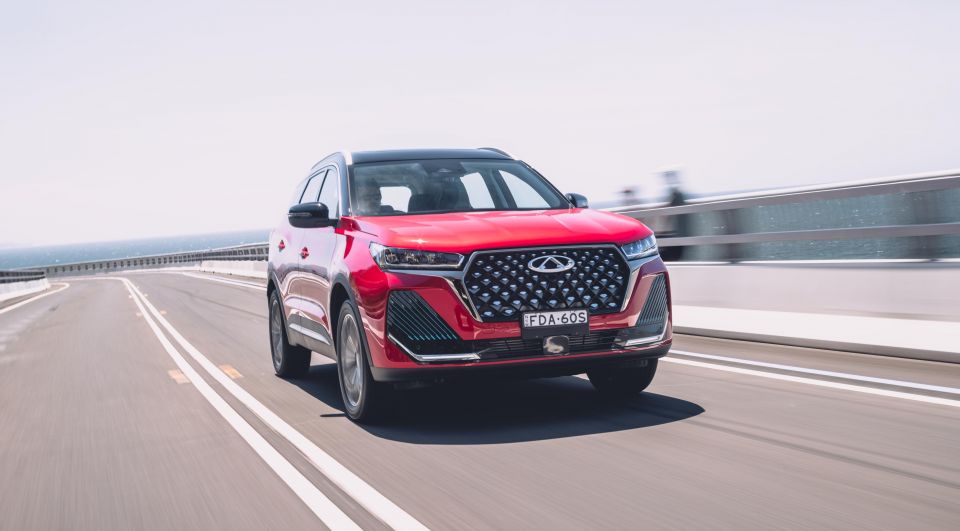
The on-road experience is typically where Chinese brands tend to stumble compared to more established makes. The Tiggo 7 Pro puts in a pretty solid showing, if not quite up there with the best in segment.
Performance and refinement from the 1.6-litre turbo petrol motor is decent. If driven in a measured manner the Tiggo 7 Pro will accelerate relatively smoothly if with the occasional hesitation on lift-off from that DCT.
I did note the Chery didn’t suffer quite as jumpy a first gear ratio as I’ve experienced in other Chinese cars with DCT’s, perhaps a condition that’s more tuned to domestic driving and traffic conditions. I’d advise not using the auto-hold function, however, as it drones as it builds revs and then awkwardly slurs off the line, particularly on inclines.
Otherwise, it’s a fairly pleasant SUV to live with in everyday driving around town. It gets along fine, rides reasonably well even on the Ultimate’s larger 19-inch alloy wheels, and insulation from the outside world is noteworthy.
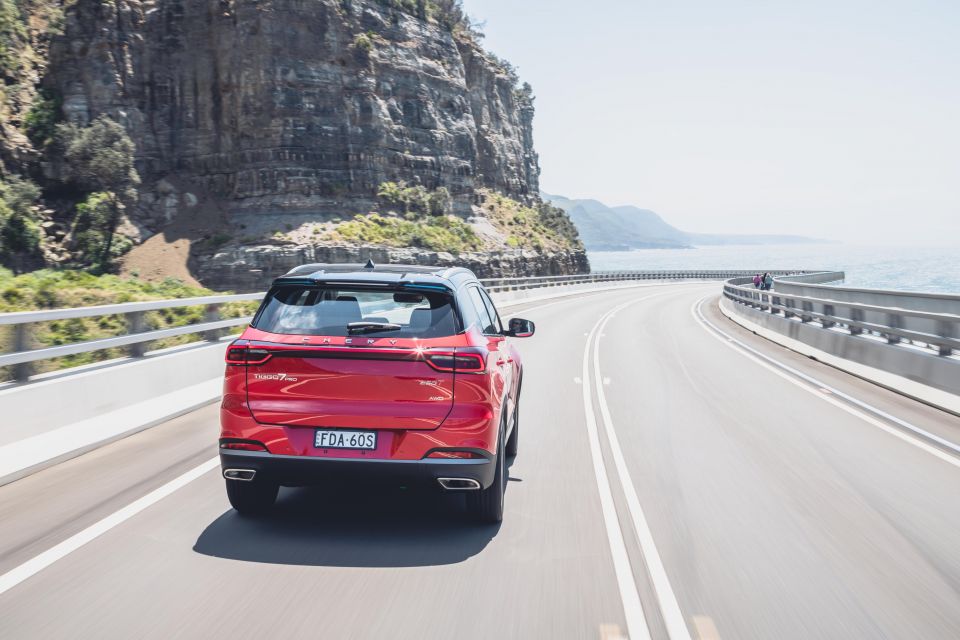
While it’s not all that large despite its bluff proportions – at 4513mm long and 1862mm wide it’s similar to a CX-5 – the Tiggo 7 Pro feels like a larger car because of its taller, boxy profile. It handles like it too.
The steering is light and at times a little vague, but that makes it an easy steer in town and you’re never urged to drive this thing harder than you need to. That said, those looking for something a little more engaging for the daily commute to work or the school run will be far better served by something like said Mazda CX-5.
Outward visibility is good thanks to the tall glasshouse and large mirrors, and if you opt for one of the higher grades you get an excellent surround camera with 3D view – competitive with GWM Haval’s excellent parking cameras.
As we’ve seen with some other Chinese-branded products, the Tiggo 7 Pro’s cameras will automatically activate as you slow to a stop approaching intersections. It’s handy if you’re navigating a tight space or gap, but if you’re meant to be looking at a map or the song that’s playing it can be annoying that the camera gets auto priority.
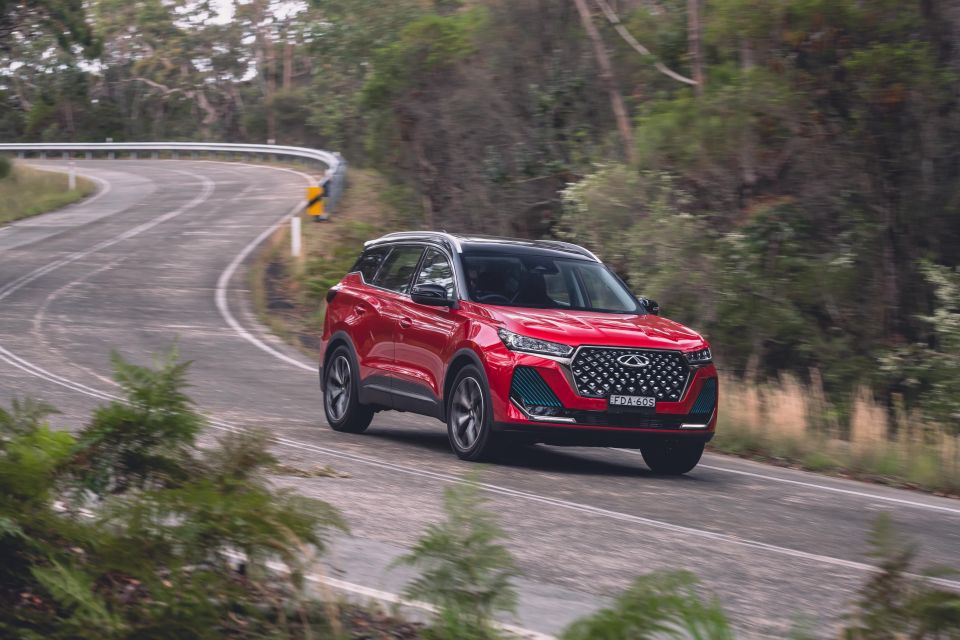
As the speed dials up, the Chery’s fundamentals are solid. That big-car feel carries over to the settled ride at speed, which is confidence inspiring when travelling at 110km/h on the Hume, for example. The drivetrain gets up to speed fine but can be a little gruff if you push it too hard, though it’s pretty settled in its seventh ratio at a cruise.
We hit some twisties as we approached the Headlands, and the Tiggo 7 Pro was a little disjointed in the experience here. While the chassis seemed capable of changing direction and stability was good, the at times slow steering was at odds with what was going on underneath.
At times it felt like the car would respond a moment after input, with almost a slight delay in how it applied steering lock as you turned the wheel. The DCT also wasn’t particularly happy with being driven hard either. There are no paddles but a manual mode via the e-shifter, which doesn’t provide the same experience.
You can flick it into Sport mode to hold gears and prime the throttle for better response, but that’s not really what this car is about. Just drive her nicely – my hot tip.
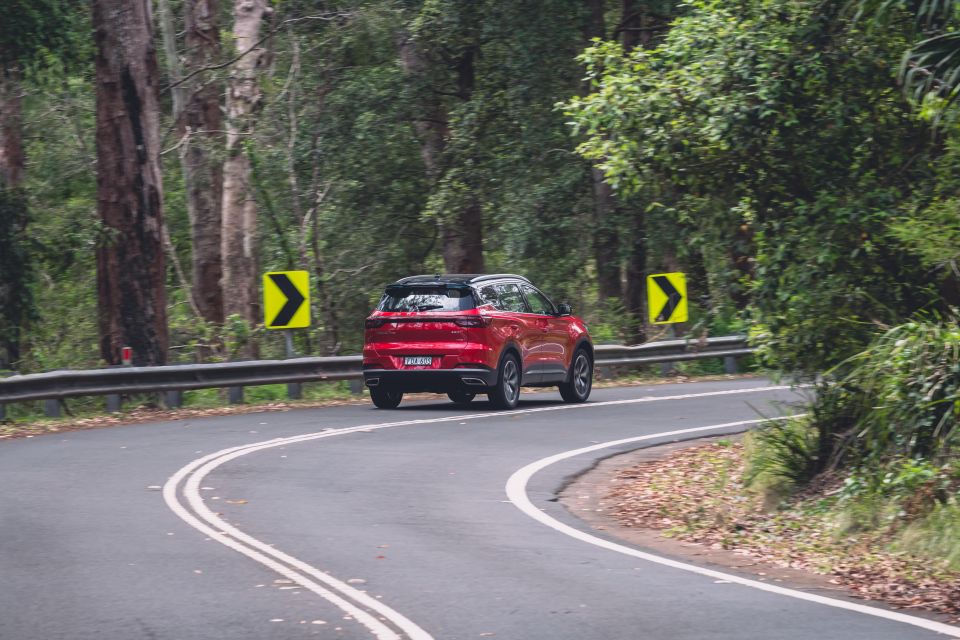
Chery copped a hiding for the calibration of the Omoda 5’s assistance systems to the point where it had to introduce running changes. While it attempted to avoid this in the Tiggo 7 Pro with some 50,000km of validation testing in Australia prior to launch, there are still areas for improvement.
The lane-keep assist was mostly fine, but the high-spec model’s lane centring function on the highway seemed a little quick to yank the steering wheel off you as soon as the lines curve or you move slightly off-course, though the over-correction will have you bouncing to the other side of the lane which is counter-intuitive.
Adaptive cruise control was mostly fine until we encountered a long hill at 110km/h on the way back to Sydney, where my fellow journalist driving experienced the Tiggo 7 unable to decide whether it wanted to stay in sixth or seventh. It would slow down and then accelerate and then repeat as it tried to maintain the set speed, and suddenly shadow braked despite no cars being directly ahead, too.
Finally, the driver attention monitoring was frustratingly vocal, bringing up a “you have been distracted” notification when it thought you had taken your eyes off the road – even if it was for a moment – then flashing up a second “you have been distracted for a long time” with a louder bong. Some work to be done, then.
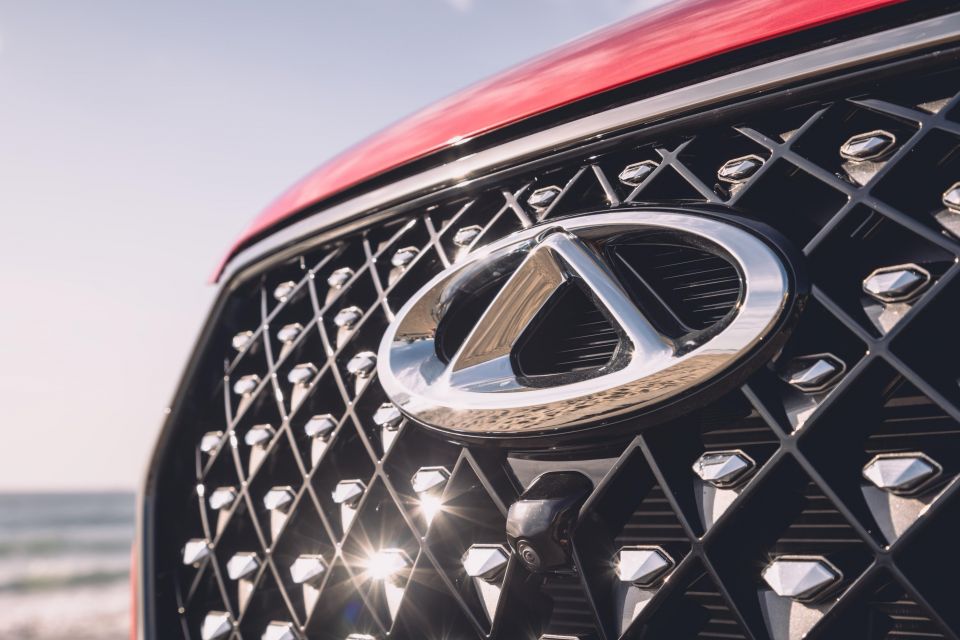

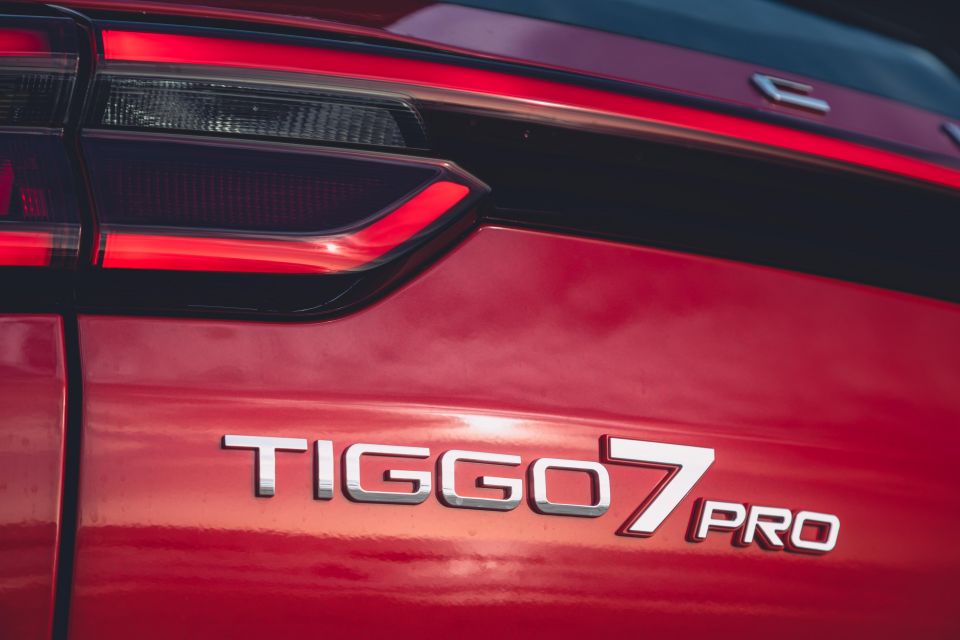

Where expert car reviews meet expert car buying – CarExpert gives you trusted advice, personalised service and real savings on your next new car.
Tiggo 7 Pro Urban highlights:
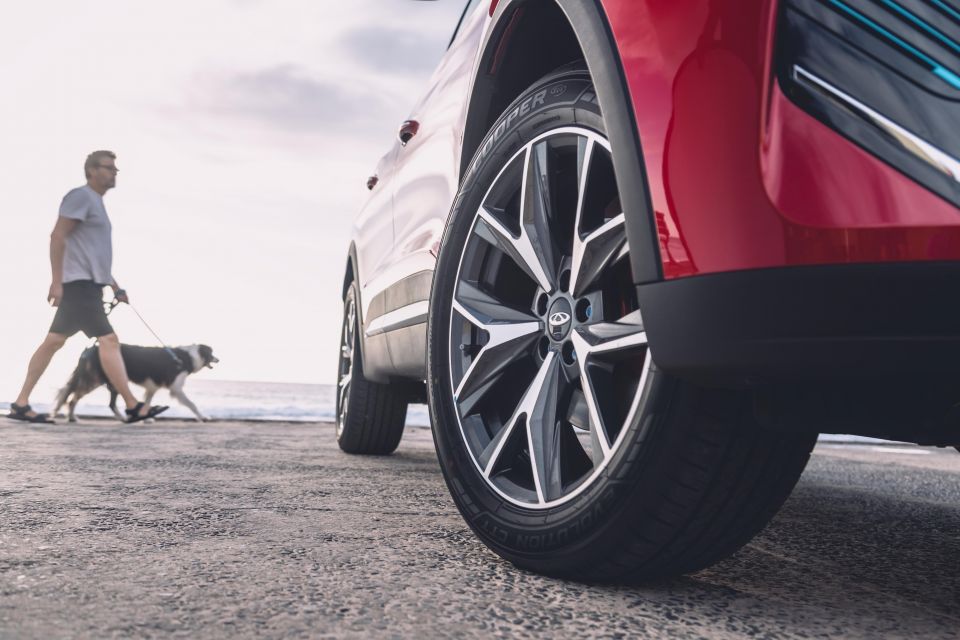
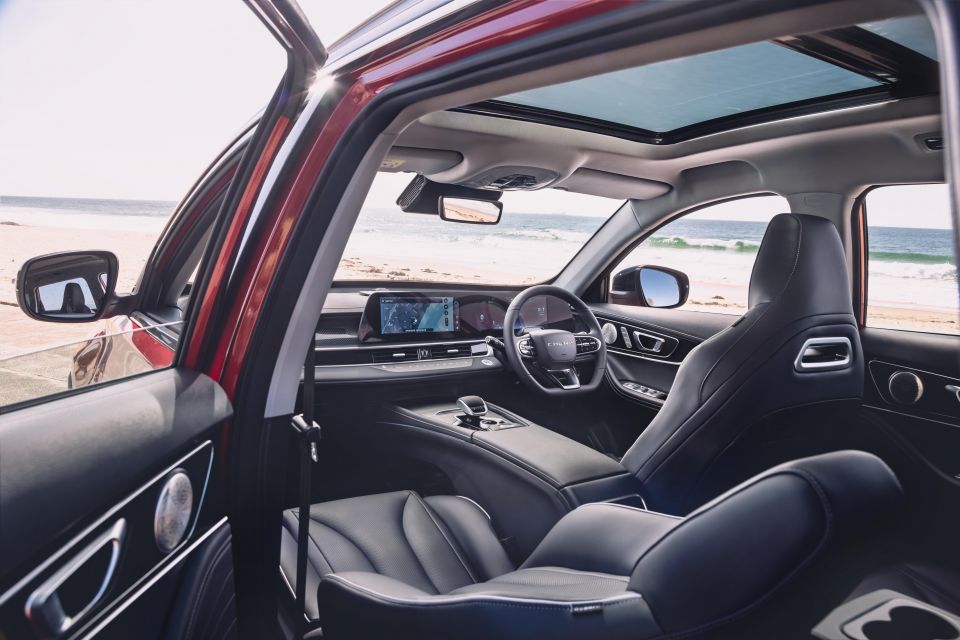
Tiggo 7 Pro Elite adds:
Tiggo 7 Ultimate adds:
The Chery Tiggo 7 Pro has yet to be tested by ANCAP or Euro NCAP, though the company said at launch that ANCAP testing was around 80 per cent done, with a rating hopefully to be released before the end of 2023.
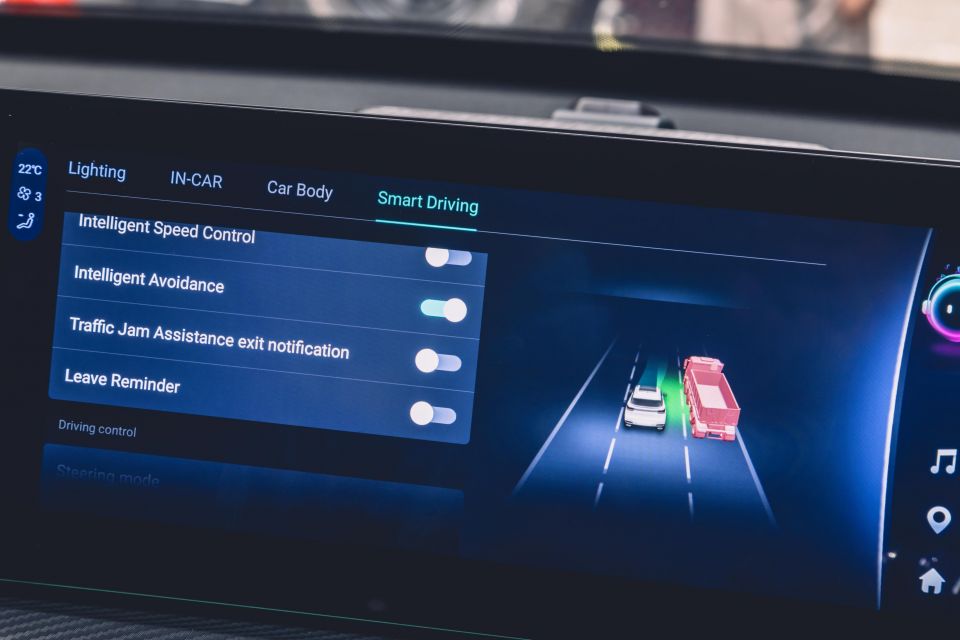
Standard safety equipment includes:
Tiggo 7 Pro Elite adds:
The Tiggo 7 Pro is backed by a seven-year, unlimited-kilometre warranty, with seven years of capped-price servicing and seven years of roadside assistance.
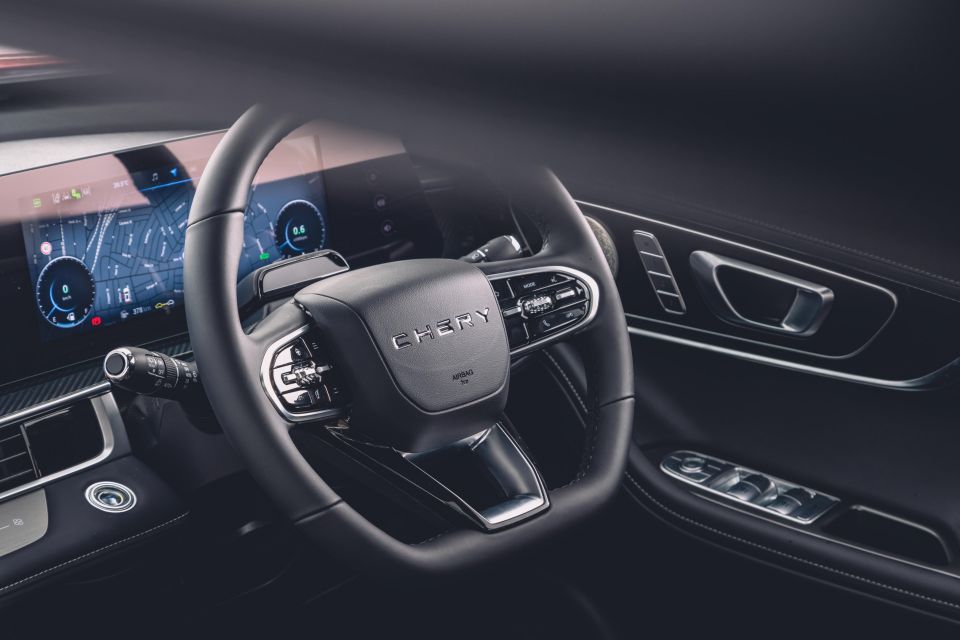
Vehicles purchased and delivered between 1 November and 30 November 2023 will receive complimentary scheduled servicing for the first three years or 45,000 kilometres, as advertised on the company’s website.
Chery has also detailed service pricing for the first seven years, with slight differences between FWD and AWD models. Intervals are 12 months or 15,000km – whichever comes first.
Chery Tiggo 7 service pricing:
Urban + Elite 1.6T FWD
Ultimate 1.6T AWD
Chery wants to be considered the ‘most premium’ of the Chinese brands, and while its design and presentation largely lives up to this, the Tiggo 7 Pro has some work to do against incredibly stiff competition.
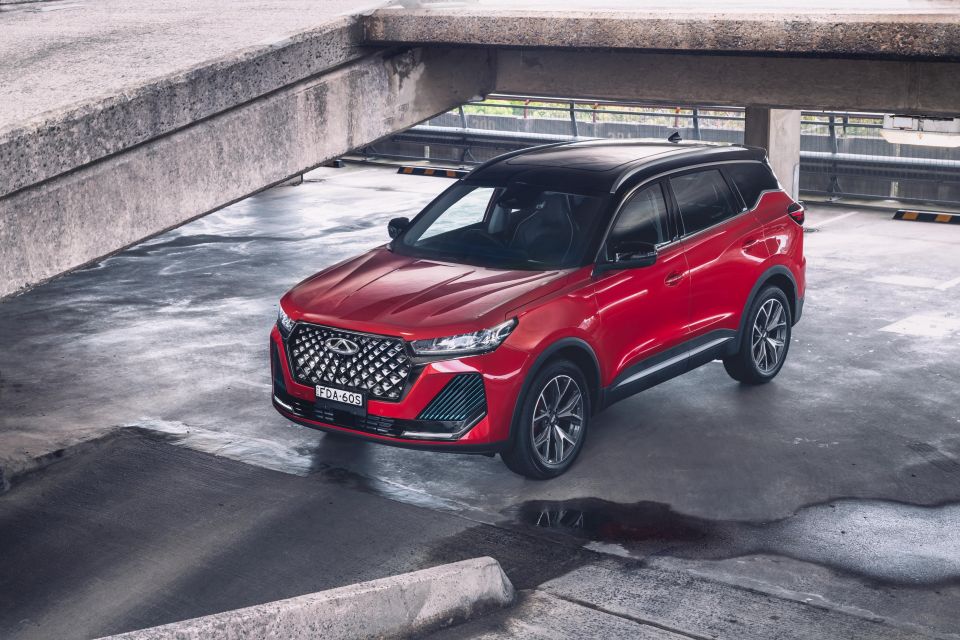
While it lines up well against something like a GWM Haval H6 or MG HS, the Chery still can’t match the all-round abilities and refinement of segment leaders like the CX-5, RAV4, Sportage and Tucson.
Yes it’s incredibly well specified, yes it has pretty luxe presentation – especially compared to the Haval and MG – but the technology integration, drive experience and drivetrain calibration still show Chery has a bit to go before it can be considered in the same conversation as the above fan favourites.
Value is a recurring theme here, and for $40,000 on the road the entry-level Tiggo 7 Pro makes a convincing proposition against a bog-standard Mazda or Kia, at least on paper. The long warranty and capped-price service coverage also put the Chinese brand in line with Kia’s benchmark ownership program, and there’s free servicing for three years up for grabs if you buy before year’s end.

At that price point however, it’s well above the entry pricing of its fellow Chinese rivals, and my usual line of advice is that these value- or price-led brands are best served in the low- or mid- range, where some of their quirks and compromises are offset by a major price saving.
The Chery doesn’t quite offer the same level of savings until you look at the top-end Ultimate which is about $15,000 less than an equivalent Japanese or Korean flagship, though mid-spec rivals these days offer much of the same good stuff save for some extra niceties. It’s also worth noting the segment-straddling Honda ZR-V, Nissan Qashqai and Skoda Karoq can also be had for similar coin – all of which I’d consider superior vehicles.
But credit where credit is due – it’s very clear that Chery has its head in the game, and is committed to localising its products and making improvements. The Tiggo 7 Pro is decent, if not quite a standout, and I expect things to continue getting better from here.
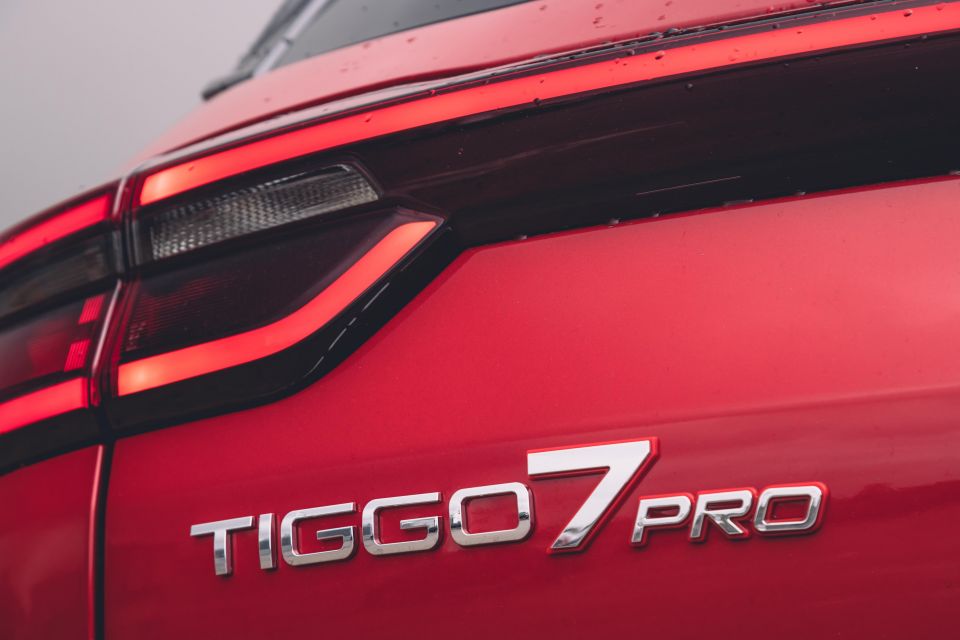
Click the images for the full gallery
BUY: Chery Tiggo 7 Pro MORE: Everything Chery Tiggo 7
Where expert car reviews meet expert car buying – CarExpert gives you trusted advice, personalised service and real savings on your next new car.
James Wong is an automotive journalist and former PR consultant, recognised among Australia’s most prolific motoring writers.


Matt Campbell
24 Hours Ago


Josh Nevett
4 Days Ago


Josh Nevett
6 Days Ago
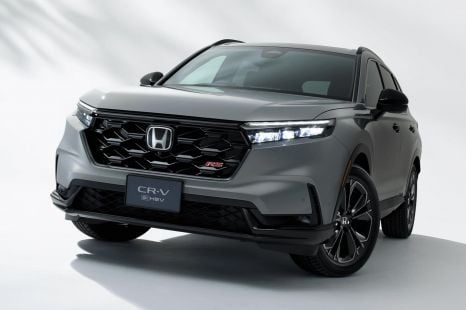

James Wong
8 Days Ago


Derek Fung
8 Days Ago


CarExpert.com.au
10 Days Ago